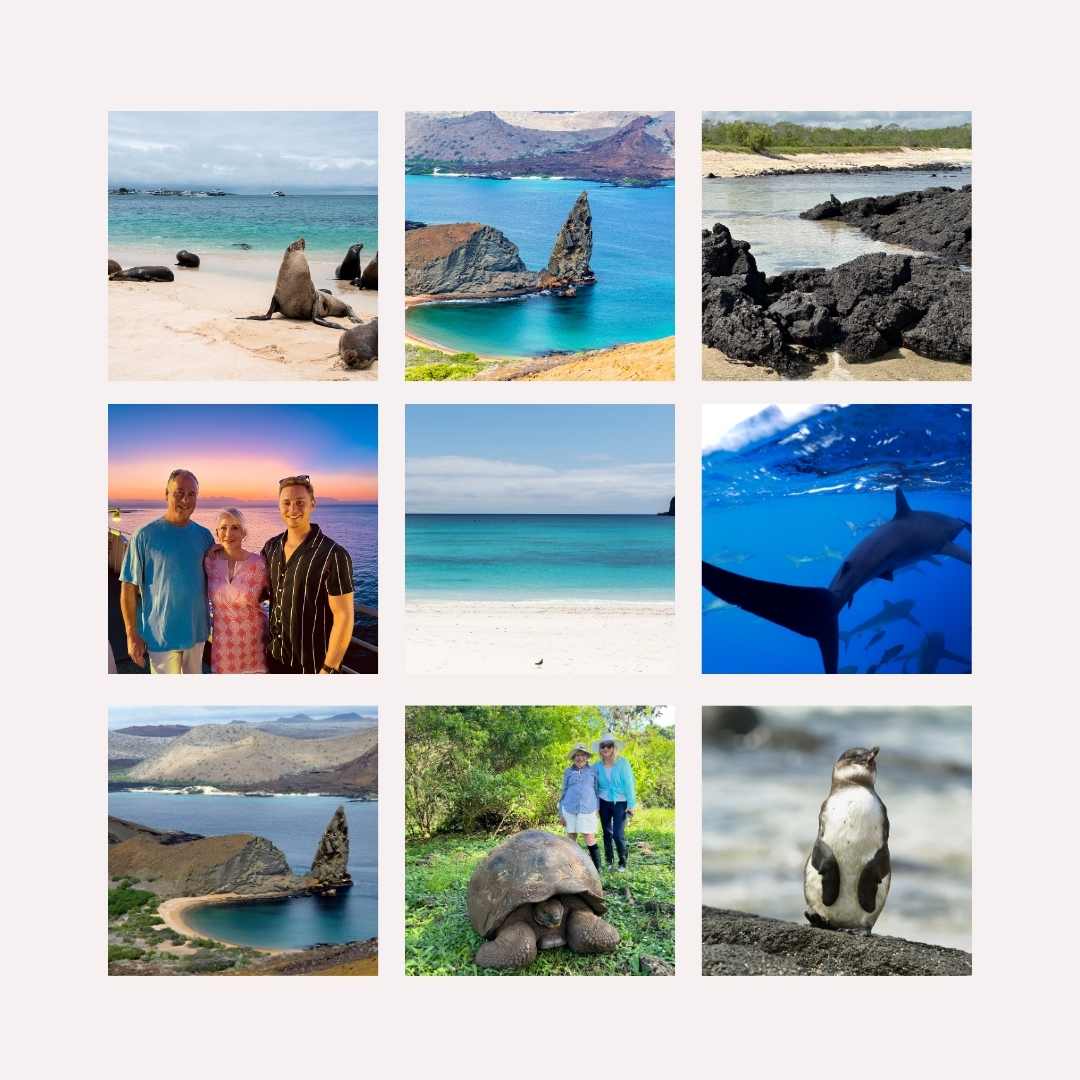22 Top reasons to visit the Galapagos Islands for vacation
If a Galapagos Islands vacation is not on your bucket list, it will be after reading my post. I am eager to share the top 22 reasons to visit the Galapagos Islands based on my recent family trip to this dream destination. The Galapagos Island cruise with National Geographic was a trip of a lifetime.
Our eight day family vacation in the Galapagos Islands was an awe-inspiring experience. The Galapagos Island cruise with National Geographic was an adventure. Exploring these remote islands, I was captivated by the unique biodiversity and stunning landscapes.
Walking in the footsteps of Charles Darwin, I couldn’t help but marvel at the scientific significance of this living laboratory of evolution and ecology. Beyond its scientific importance, the Galapagos left a profound personal impact, reminding me of the importance of conservation efforts to protect these precious ecosystems for generations to come.
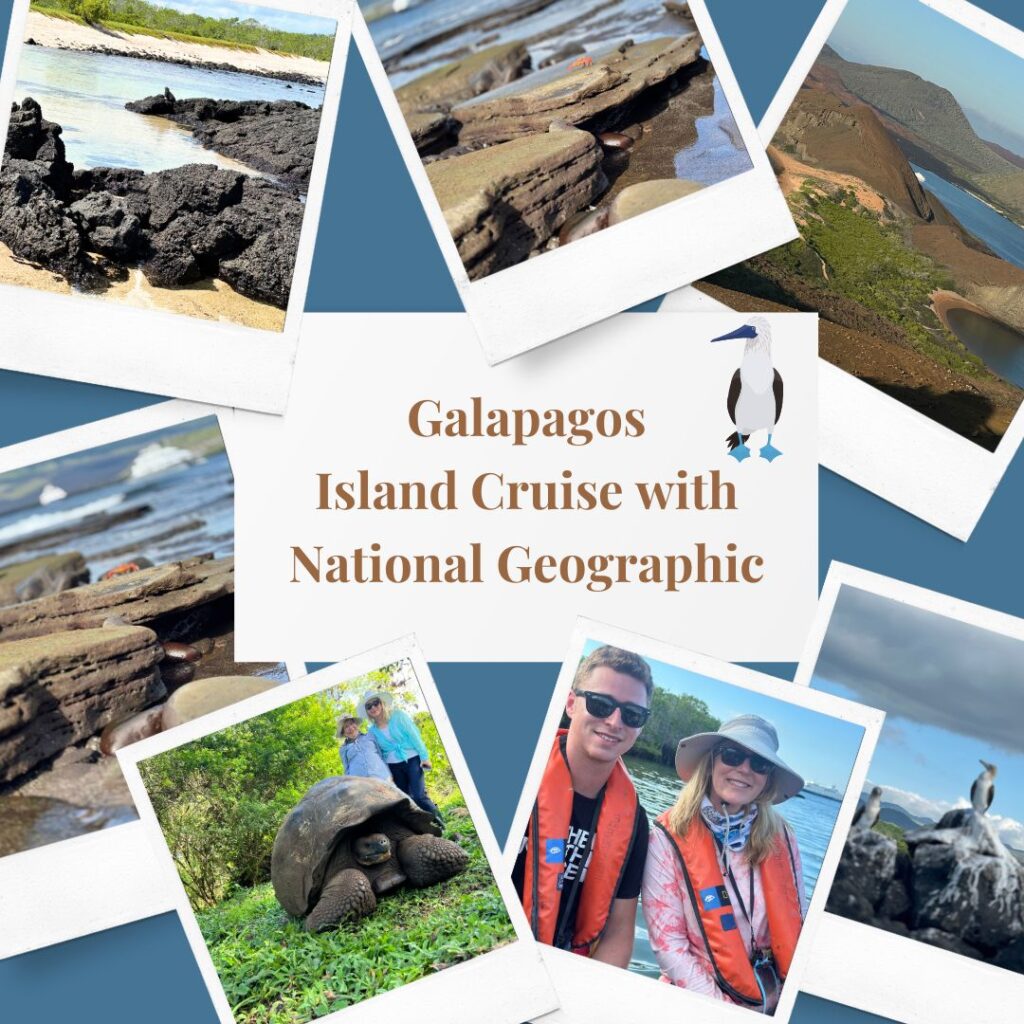
Where Are The Galapagos Islands?
Galapagos Islands, island group of the eastern Pacific Ocean, administratively a province of Ecuador. The Galapagos consist of 13 major islands (ranging in area from 5.4 to 1,771 square miles [14 to 4,588 square km]), 6 smaller islands, and scores of islets and rocks lying athwart the Equator 600 miles (1,000 km) west of the mainland of Ecuador.
By far the most remarkable feature in the natural history of this archipelago…is that the different islands to a considerable extent are inhabited by a different set of beings…I never dreamed that islands, about fifty or sixty miles apart, and most of them in sight of each other, formed of precisely the same rocks, placed under a quite similar climate, rising to a nearly equal height, would have been differently tenanted.”
Charles Darwin
Top Reasons To Visit The Galapagos Islands- Bucket List Trip
Why visit the Galapagos Islands? I will give you 22 reasons you should add the Galapagos Islands to your bucket list. After returning from my Galapagos Island cruise, I had to share the highlights with you.
Here we go….
1. Unique Wildlife Including “Endemic Species”
One of the top reasons to visit the Galapagos Islands is to experience the unique endemic species only found on the Galapagos Islands. The Galapagos Island animals are special.
When wildlife are native to only one part of the world, they are referred to as “endemic species.” These species are unique to a specific geographic area and are not found naturally anywhere else on Earth.
Unlike any other place on earth, the Galapagos Islands are home to a remarkable array of wildlife. Every encounter with these wild animals is a testament to the islands’ biodiversity, from the iconic Galapagos giant tortoise to the playful sea lions that inhabit the shores.
A Few Galapagos Island Endemic Species: Galapagos Island Animals
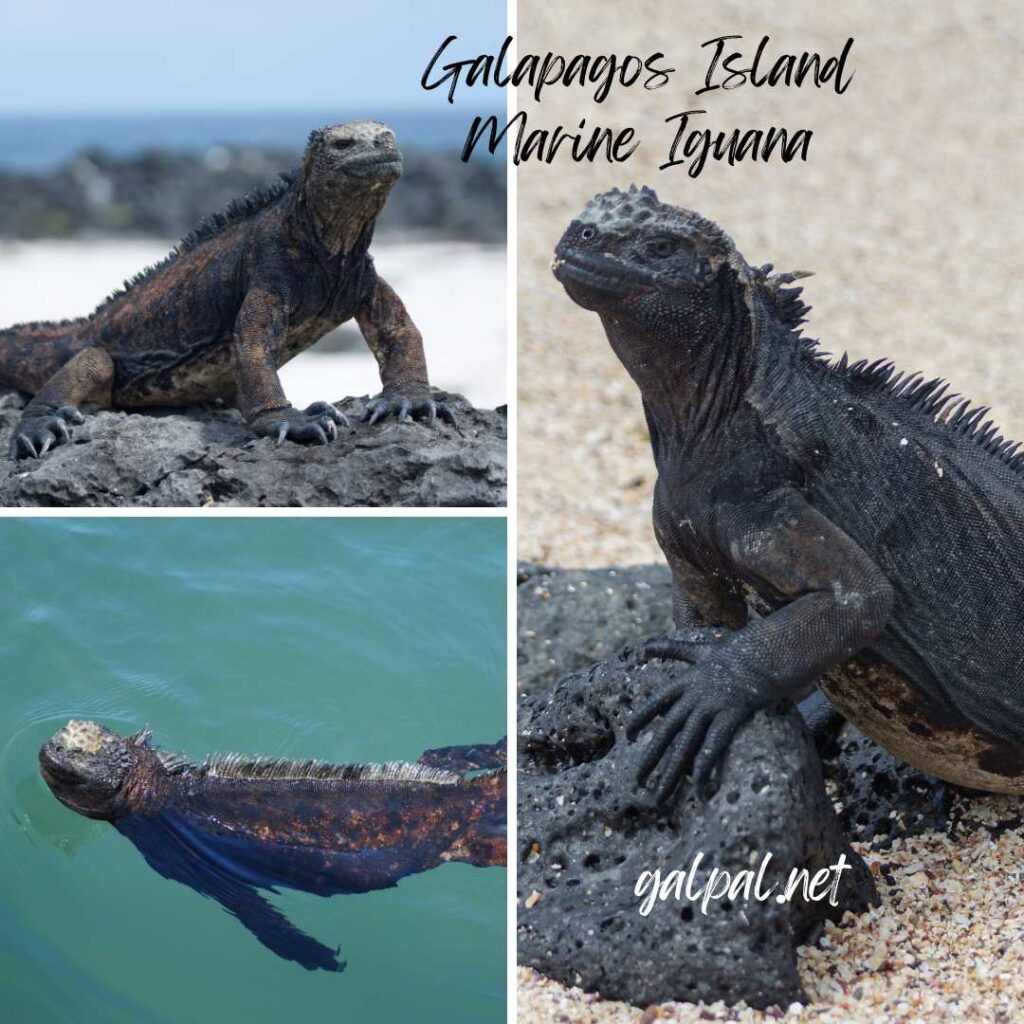
a. Galapagos Marine Iguana (Amblyrhynchus cristatus):
The only iguana species in the world capable of foraging in the sea, the Galapagos Marine Iguana is a fascinating example of adaptation to a marine environment. It is found on most of the islands in the archipelago. It’s a unique animal of the Galapagos.
Despite not being the most aesthetically pleasing species in the archipelago (Charles Darwin once referred to them as “hideous-looking”), marine iguanas are undeniably fascinating. People come searching for these wildlife animals in the Galapagos Islands.
If you take a Galapagos Island cruise, you will take zodiac boats to the shore where you will find these unique animals of the Galapagos.
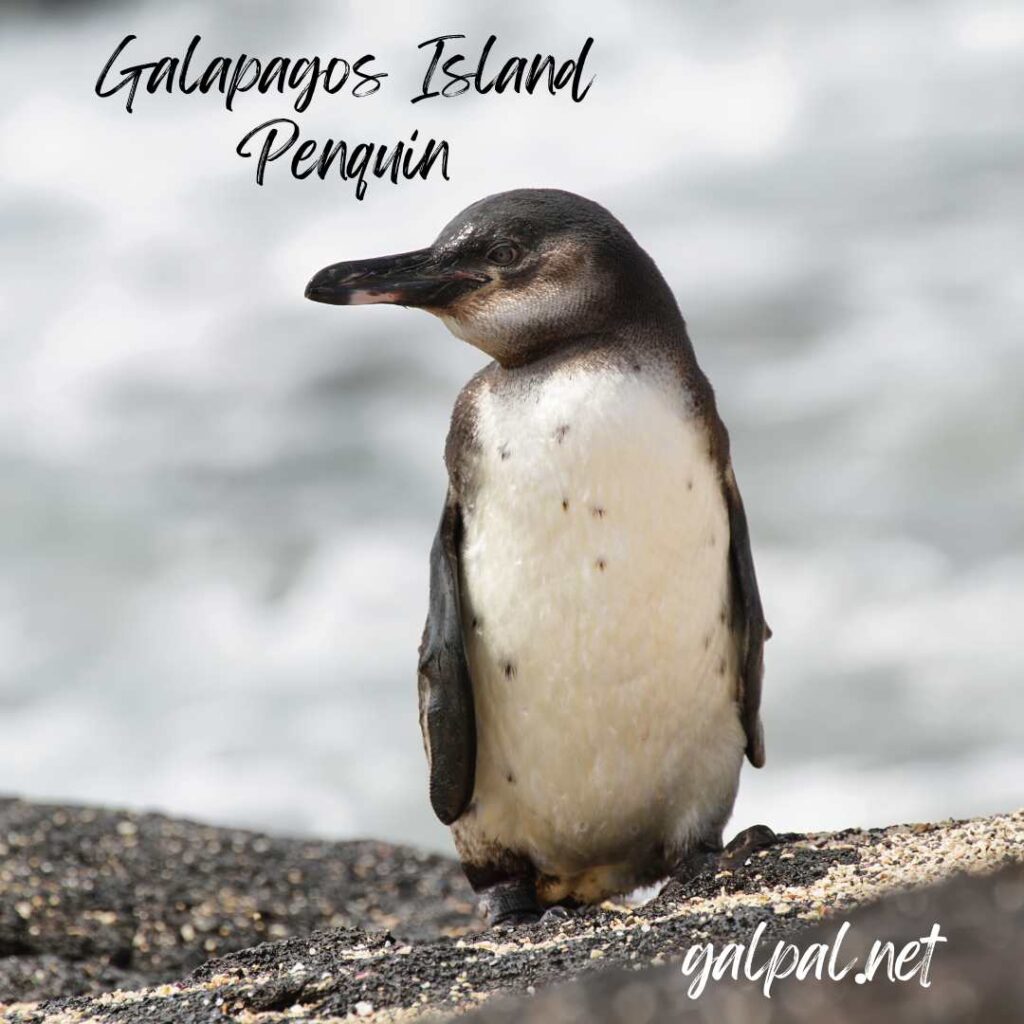
b. Galapagos Penguin (Spheniscus mendiculus):
One of the most adored animals of the Galapagos Islands is this cute little penguin. The only penguin species to live north of the equator, the Galapagos Penguin is adapted to warm waters and is the smallest penguin species. It is found primarily on Fernandina and Isabela Islands. This penguin is one of the wildlife endemic species of the Galapagos.

c. Galapagos Fur Seal (Arctocephalus galapagoensis):
Endemic to the Galapagos, these fur seals are smaller than their sea lion relatives and are adapted to rocky shorelines. These seals are one of the most unique animals in the Galapagos Islands. They are found on various islands in the archipelago.

d. Galapagos Mockingbird (Nesomimus spp.):
The Galapagos Mockingbird is a group of species found on different islands, each with its unique characteristics and adaptations. They are known for their diverse vocalizations and behavior.
Other Unique Wildlife In The Galapagos Islands:
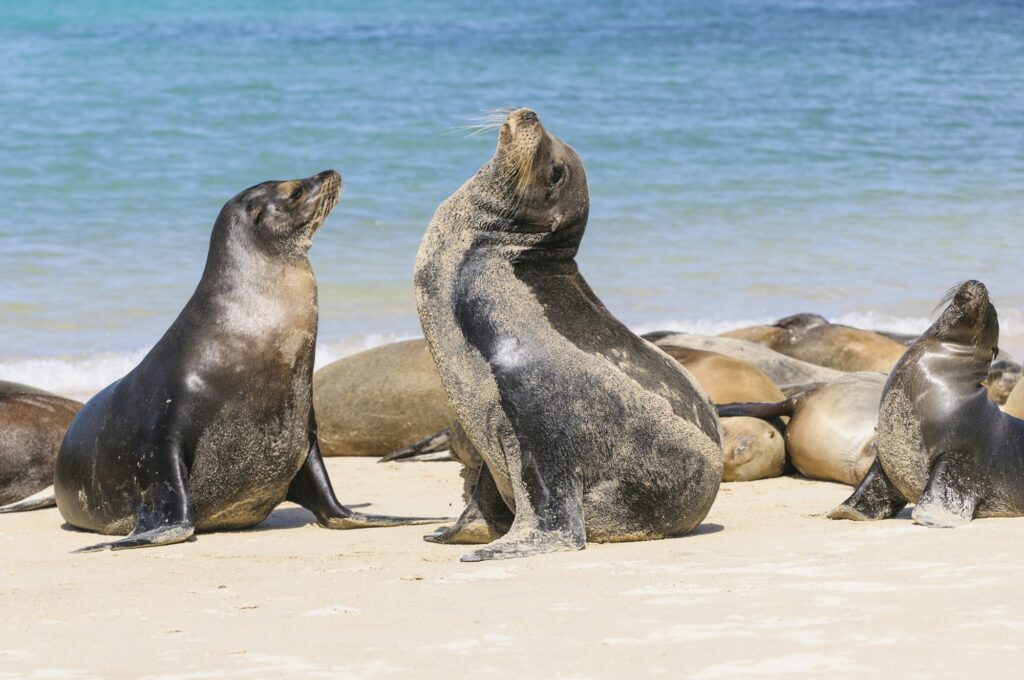
Galapagos Sea Lions:
Visitors to the Galápagos Islands often have memorable encounters with Galápagos sea lions. These friendly animals might come near boats or shores, providing chances for observing and photographing wildlife while following rules to prevent disrupting their natural behavior.
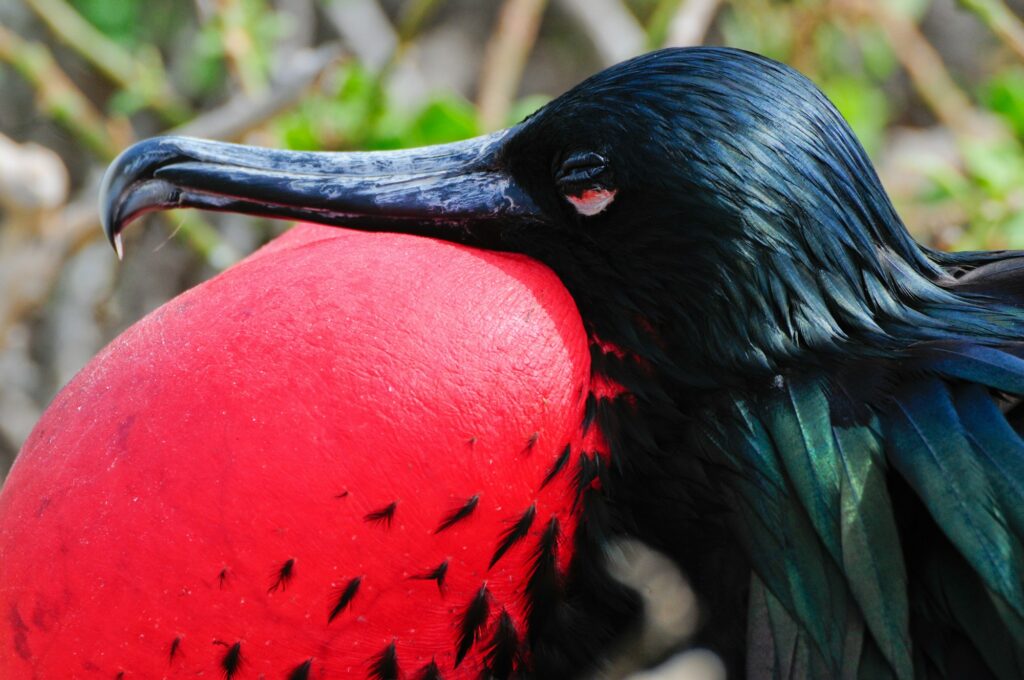
Frigatebird
A frigatebird is a type of seabird known for its impressive aerial abilities and unique adaptations. Recent research has revealed that these birds can sleep in flight. These birds a unique animals found in the Galapagos Islands.
Frigatebirds have the remarkable ability to sleep while in flight. They rest one hemisphere of their brain at a time, allowing them to keep one eye open and stay airborne. This adaptation enables them to rest and recuperate while remaining vigilant for potential threats or opportunities for food.
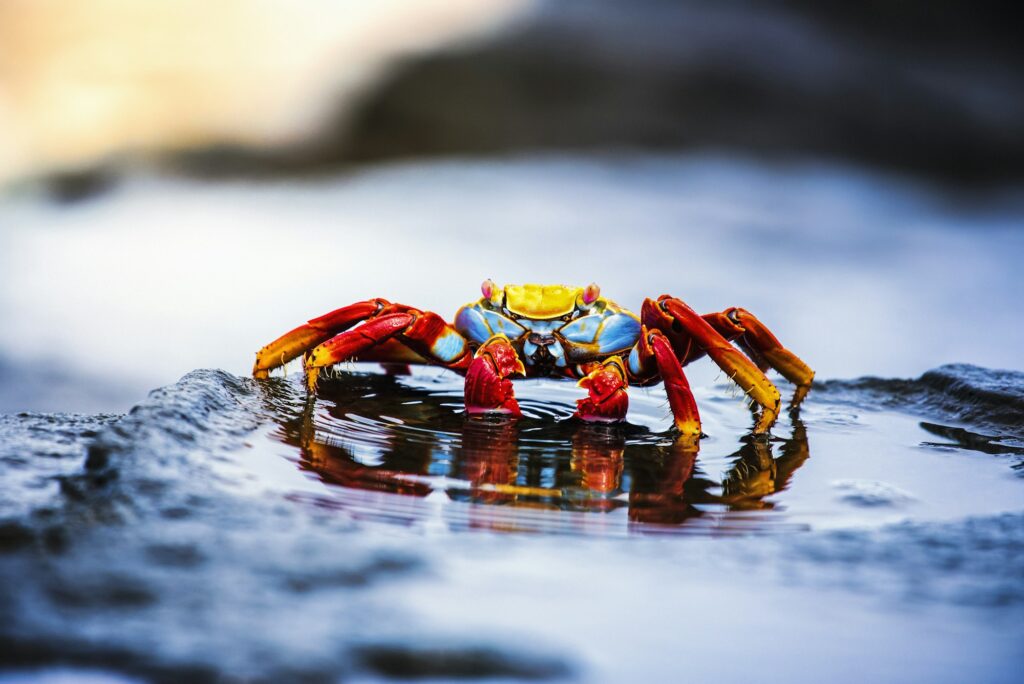
Sally Lightfoot Crab
The Sally Lightfoot crab is one of the Galapagos Islands’ most colorful coastal scavengers, beloved by both travelers and locals. Legend has it that this crab was named after a renowned Caribbean dancer, and its vibrant appearance and agile movements make it easy to see why it’s a favorite among observers.
This colorful crab is one of the unique endemic species in the Galapagos Islands.

Giant tortoises
Often affectionately termed as “the gentle giants of the Galapagos”, giant tortoises have long since intrigued travellers to the archipelago. This endemic species were discovered by Spanish sailors back in 1535. They presumably named the archipelago “galápago”, the Spanish word for “tortoise” after encountering an abundance of giant tortoises on their journey. The large turtles are unique animals found in the Galapagos Islands.

Vibrant Pink Flamingos
The vibrant pink flamingos of the Galapagos share similarities with the American flamingo but are notably smaller and lay tinier eggs. Their distinctive pink coloration is a result of their diet, which includes algae, crustaceans, and plants rich in carotenoid pigment. This pigment influences the intensity of their pink plumage and skin, creating their signature hue.
These gorgeous creatures are unique animals in the Galapagos Islands.

Blue-Footed Booby
The Blue-Footed Bobby bird is one of the biggest reasons to visit the Galapagos Islands- due to the name alone. Why? For the name of the iconic bird alone.
The blue-footed booby is an iconic and beloved species in the Galapagos Islands, known for its distinctive blue feet. These vibrant feet are crucial during mating, as males with brighter blue hues are perceived as more attractive and successful in courtship.
During the courtship ritual, male blue-footed boobies present small gifts like sticks or stones to females and then proudly display their colorful feet to woo potential mates. This charming behavior makes them a favorite among visitors to the Galapagos. I just love these animals from the Galapagos Islands.
2. Naturalist Guides: A Requirement
The second reason to visit the Galapagos Islands is to learn from the experienced naturalist. The guided tours are a must in the Galapagos Islands, and I experienced firsthand why they’re so vital. Since 1975, every visitor, including myself, has had to be accompanied by a certified naturalist guide. These guides aren’t just knowledgeable; they’re the backbone of the Galapagos National Park’s management.
During my time there, my guide not only shared fascinating insights about the islands but also played a crucial role in enforcing park rules and keeping an eye out for any issues like introduced species or trails needing attention. Their passion for conservation and their ability to make the experience educational and engaging truly added depth to my journey.
It’s clear that the Galapagos guides are more than just tour companions; they’re stewards of these precious ecosystems. Their presence isn’t just mandated; it’s a fundamental part of what makes a visit to the Galapagos Islands so enriching and impactful.
One of the best ways to explore the Galapagos Islands is with the guidance of expert naturalist guides. These knowledgeable professionals not only lead you to the best wildlife viewing spots but also share fascinating insights into the islands’ geological history, ecology, and the process of natural selection that fascinated Charles Darwin.
3. Most Protected Destination On The Planet
The Galapagos Islands hold a special place in my heart as one of the most meticulously protected destinations on our planet. It’s incredible to think that amidst the rapid development elsewhere, these islands have managed to preserve their natural beauty and unique ecosystems.
You must visit the Galapagos Islands to understands why it is so special. The fact that this area is so well protected is one the main reasons to visit the Galapagos Islands.
Situated around 600 miles off the coast of mainland Ecuador in the vast expanse of the Pacific Ocean, the Galapagos archipelago comprises 61 islands and islets, with 13 main islands encircling the equator. This place is a true gem of nature.
The Galapagos Islands were designated as the first-ever World Heritage site by UNESCO back in 1978. It’s a testament to the importance of conservation efforts and the commitment to preserving these islands for generations to come.
During my time there, I marveled at the remote and untouched beauty of most of the islands. The strict regulations in place, including limits on visitor numbers and the requirement for licensed guides, ensure that the delicate ecosystems remain undisturbed. It’s a top reason to visit the Galapagos Islands!
One of the most memorable experiences was making “wet landings” onto the beaches from our yacht, using pangas (small rafts). It was a reminder of the need to tread lightly and respect the local environment.
4. Volcanic Islands:
The islands’ volcanic origins are evident in their dramatic landscapes, characterized by towering peaks, lava fields, and unique geological formations like Pinnacle Rock. These volcanic forces have shaped not only the physical features of the islands but also influenced the evolution of the endemic species that call the Galapagos home.
The interactions between these tectonic plates result in the volcanic activity that formed the Galapagos Islands. The movement and subduction of these plates create magma chambers beneath the Earth’s crust, leading to volcanic eruptions that build up the islands over millions of years. This geological phenomenon has contributed to the unique landscapes, diverse ecosystems, and geological features that define the Galapagos Islands today.
5. Marine Life: Incredible Snorkeling
Beneath the surface of the Pacific Ocean surrounding the Galapagos Islands lies a vibrant underwater world. Dive or snorkel to encounter hammerhead sharks, manta rays gliding gracefully through the water, and the majestic whale sharks, the largest fish in the sea.
The cold waters of the Humboldt Current bring nutrient-rich waters that sustain a diverse marine ecosystem. During our visit, the water was a perfect 82 degrees. Bath water snorkeling was unbelievable. The marine life is a key reason to visit the Galapagos Islands.
6. Protected Areas:
The Galapagos National Park encompasses a network of protected areas where conservation efforts are in place to safeguard the islands’ natural treasures. These protected zones ensure that wildlife habitats remain intact and that visitors can witness the natural beauty of the Galapagos while minimizing human impact.
7. Family-Friendly:
A family trip to the Galapagos Islands is an excellent opportunity for families to bond over unforgettable wildlife encounters. Children can marvel at the sight of Galapagos penguins, the only penguin species found north of the equator, and learn about conservation efforts aimed at preserving these unique creatures for future generations.
8. Galapagos Cruises:
Embarking on a Galapagos cruise is often considered the best way to explore the diversity of the islands. Cruise ships ranging from luxurious vessels to smaller boats offer itineraries that take you to different main islands like San Cristobal, Santa Cruz, and Isabela, with expert guides leading shore excursions and day trips to visitor sites.
9. Walk In Charles Darwin’s Footsteps:
In 1835, Charles Darwin embarked on a voyage aboard the HMS Beagle to the Galapagos Islands, where he coined them as “a little world within itself” due to their exceptional diversity. His groundbreaking theories on evolution were inspired by this experience, which led to the publication of his influential works.
Today, the Galapagos remains a rare and captivating destination, continuously offering surprises to visitors. Be sure not to overlook the Charles Darwin Research Center during your exploration of this remarkable archipelago!
The Galapagos Islands hold a significant place in scientific history, thanks to Charles Darwin’s visit aboard the HMS Beagle in 1835. His observations of unique wildlife, such as the blue-footed booby with its distinctive webbed feet for diving, and his study of Darwin’s finches, which showcased adaptive radiation, contributed to his groundbreaking work on the theory of evolution by natural selection.
10. Enchanted Remote Islands:
The Galapagos Archipelago is often referred to as the Enchanted Islands due to their captivating beauty and otherworldly landscapes. People from all over the world want to experience the enchanted islands. It’s a top reason to visit the the Galapagos Islands.
Witnessing the courtship rituals of blue-footed boobies during mating season or observing the intricate nests of flightless cormorants adds to the enchantment of these remote and pristine islands.
The Galapagos Islands are a remote and isolated paradise, offering visitors a chance to disconnect from the modern world and immerse themselves in nature’s wonders. Each island within the archipelago has its own unique charm, from the rugged coastlines of Isabela Island to the volcanic landscapes of Bartolome Island.
11. Adventure Activities:
Whether you’re an avid scuba diver eager to explore underwater realms teeming with marine life or a hiker seeking panoramic views from volcanic peaks, the Galapagos Islands offer a range of adventure activities. Snorkel with playful sea lions, kayak along the coastline, or hike to vantage points like Bartolome Island’s iconic Pinnacle Rock for breathtaking vistas.
12. High Season Excitement:
The high season in the Galapagos brings excitement and abundant wildlife sightings. From humpback whales breaching offshore to pods of dolphins frolicking in the waves, the winter months (June to December) coincide with colder waters and the arrival of migratory species, making it an ideal time for wildlife watching enthusiasts.
13. Bucket List Trip- Once-in-a-Lifetime Trip:
Visiting the Galapagos Islands is often described as a trip of a lifetime, combining the thrill of wildlife encounters, the awe-inspiring beauty of natural landscapes, and the opportunity to witness the wonders of natural selection in action. Whether it’s crossing paths with a majestic whale shark or observing the playful antics of fur seals, every moment in the Galapagos is a memory to cherish forever.

14. Jaw Dropping Geology
The geology of the Galapagos Islands is simply breathtaking. It’s awe-inspiring to think about how relatively young these islands are in the grand scheme of things. Legend has it that Isabela and Fernandina, the largest among them, are just shy of a million years old. They emerged from the depths of the sea through the powerful forces of three tectonic plates converging, creating ongoing volcanic activity that continues to shape these islands even now.

15. White Sand Beaches
Expect no beach umbrellas or fizzy drinks here, but you will need to share the beach with inhabitant sea lions, pelicans, penguins, and sometimes even sharks. Many locations are great for beach snorkeling as well.
- Gardner Bay (Española Island): Gardner Bay boasts powdery white sand and crystal-clear turquoise waters, making it an ideal spot for swimming, snorkeling, and sunbathing. Visitors often encounter playful sea lions and colorful marine life in the bay.
- Tortuga Bay (Santa Cruz Island): Tortuga Bay offers a pristine stretch of beach with calm waters, perfect for swimming and kayaking. The beach is accessible via a scenic walking trail through mangrove forests, providing opportunities to spot Galapagos finches and other wildlife.
- Puerto Chino Beach (San Cristobal Island): Puerto Chino Beach is a hidden gem known for its peaceful atmosphere and picturesque surroundings. Visitors can relax on the sandy shores, explore tide pools teeming with marine life, and take in panoramic views of the coastline.
- Red Beach (Rabida Island): As its name suggests, Red Beach features reddish-colored sand due to the high iron content in the volcanic rocks. The unique landscape, combined with opportunities for snorkeling and observing seabirds, makes it a favorite among nature enthusiasts.
16. Star Gazing
The night skies over the Galápagos Islands offer a breathtaking spectacle, unmarred by light pollution. Positioned near the Equator, the archipelago provides a rare chance to witness constellations from both the Northern and Southern Hemispheres simultaneously, adding to the allure of stargazing in this pristine celestial haven.
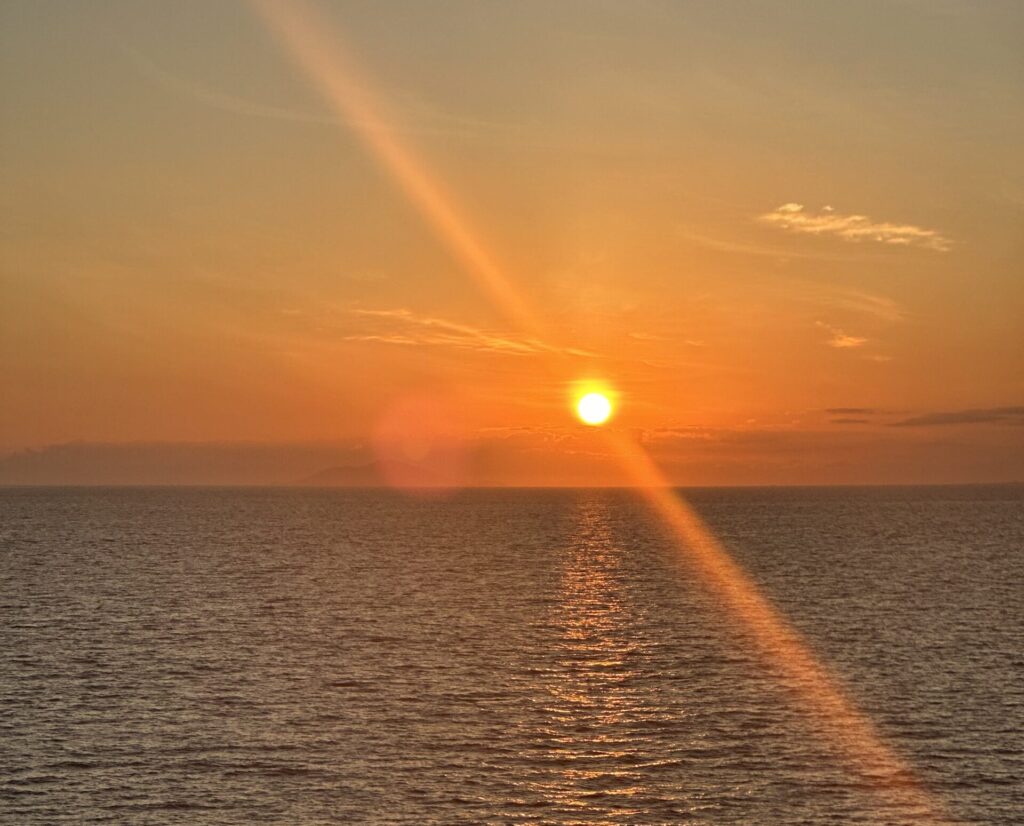
17. Heavenly Sunsets
The sunset in the Galapagos Islands is a stunning display of colors. As the sun sinks towards the horizon, the sky becomes a canvas of orange, pink, and gold, casting a warm glow over the tranquil waters.
Silhouettes of nearby islands add depth to the scene, while seabirds glide gracefully overhead, their wings illuminated by the vibrant colors. It’s a magical moment that fills me with awe and gratitude for the beauty of nature.

18. The Most Volcanically Active Areas In The World
The Galápagos Archipelago stands as one of the most volcanically active regions globally, situated atop a hotspot in the western Pacific. Over millennia, volcanic activity led to the creation of the islands as magma repeatedly pierced the sea floor, building up layers of rock that eventually formed into land masses. Currently, there are 13 active volcanoes in the archipelago, with sporadic eruptions noted as recently as 2018.

19. The Geography
People are drawn to the geography of the Galapagos Islands, particularly the unique formation of its volcanoes. Unlike typical volcanic activity caused by tectonic collisions, the Galapagos sit on the Nazca Plate, isolated in the Pacific. However, they have volcanoes due to a “hot spot,” where magma is hotter than usual.
As the Nazca Plate moves over this hot spot, it melts the crust, creating volcanoes that form the islands. This process results in the stunning landscapes of the Galapagos and other hot spot chains like Hawaii. This geological phenomenon makes exploring the Galapagos a captivating journey into Earth’s dynamic forces.
20. Eco- Tourism
The Galapagos Islands is one of the top places for eco-tourism. The destination aims to provide beautiful natural experiences for tourists, but also to educate visitors about the importance of protecting natural resources.Experience sustainable travel practices and responsible tourism in a protected natural environment.
21. Photography Opportunities
Photography enthusiasts will find the Galapagos Islands a paradise for capturing stunning images. Since we traveled with National Geographic, photography was a top priority. We took so many digital photos it was insane!
There are so many photo opportunities. From the wild life and the volcanic landscapes of the Galapagos. The landscape provides a dramatic backdrop for photography. Action shots happen every moment with the life action wildlife and family activities.
We traveled with National Geographic so you better bet that photography is one of the top reasons to visit the Galapagos Islands.
22. Astrophotography:
With minimal light pollution and clear night skies, the Galapagos offers excellent conditions for astrophotography. Photographers can capture stunning shots of the Milky Way, constellations, and celestial phenomena against the backdrop of the islands.
23. Culinary Delights
Experience the unique flavors of Galapagos cuisine, which blends traditional Ecuadorian dishes with fresh seafood and locally sourced ingredients. From freshly caught fish ceviche to exotic fruits, gourmet dining experiences, and cooking classes, food enthusiasts will delight in the island’s culinary offerings.
Best Time to Visit The Galapagos Islands:
Depending on your interests, choosing the best time to visit the Galapagos can enhance your experience. The dry season (June to December) offers cooler temperatures and is ideal for exploring on land, while the warmer rainy season (January to May) brings lush landscapes and is perfect for spotting newborn sea lion pups.
In summary, the Galapagos Islands offer a blend of history, natural beauty, unique wildlife, and adventure, making them a must-see destination for travelers seeking an unforgettable journey into the heart of evolutionary marvels and protected natural areas.

